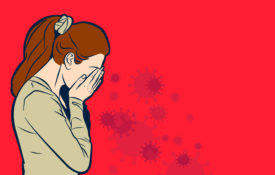-
Adam Grant on How Jobs, Bosses and firms may improve after the crisis
APS Member/Author: Adam Grant IN 1993 THE management guru Peter Drucker argued that “commuting to office work is obsolete.” As of last year, his vision hadn’t quite come true: nearly half of global companies in one survey still prohibited remote working. Then the pandemic hit. Suddenly millions of people started doing their jobs from home. Work will never be the same. Yet the changes to where we work are only a small part of the story. The experiences from past recessions and crises suggest that covid-19 is likely to transform three features of our work lives: job satisfaction, ethical leadership and trust. Start with our attitudes towards work.
-

NIH Funding to Study the Prevention of Dental Fear and Anxiety
The National Institute of Dental and Craniofacial Research (NIDCR) has issued a funding opportunity for research into the causal mechanisms behind dental fear and anxiety.
-

NIH Encourages the Study of Community Interventions to Address COVID-19 Consequences
The National Institutes of Health (NIH) has issued a funding opportunity for research studying current and prospective COVID-19 mitigation efforts and their effectiveness and impact on health disparity populations, as designated by NIH, which face social and health vulnerabilities.
-

New Content From Current Directions in Psychological Science
A sample of articles on risk for developing aggressive behavior, cultural evolution, adolescent depression, inequality among adolescents, memory and statistical learning, and how digital technologies impact emotions.
-

Contracting COVID-19: Lifestyle and Social Connections May Play a Role
New research proposes lifestyle, social, and psychological factors may increase the risk of contracting COVID-19. [July 9, 2020]
-
‘It Can Be Hard to Concentrate or Focus on Something Else’
After George Floyd was killed by police officer Derek Chauvin in Minneapolis, as three other police officers looked on, images and videos circulated via news and social media. Weeks earlier, video of Ahmaud Arbery’s killing[content warning: the linked post contains descriptions of graphic violence]went public, prompting the long-overdue arrest of the two white men who killed him. On social media, Black people expressed frustration that it took this graphic, viral video — shared widely by white people — to get justice. Both deaths reignited debate over the dissemination of images and videos depicting dead Black people, and the trauma they inflict on Black people who see them.

